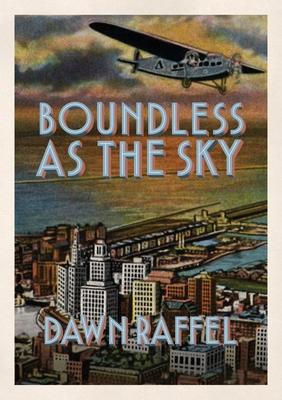Dawn Raffel's Boundless as the Sky is a book of the invisible histories that repose beneath the cities we inhabit, and the worlds we try to build out of words. The first of its two parts, stories of real and invented cities, some ancient, some dystopian, is a response to Italo Calvino's Invisible Cities. The second part comes together into one narrative, taking place in a single city-Chicago-on a single day in 1933. It is based closely on a true event, the arrival of a "roaring armada of goodwill" in the form of twenty-four seaplanes flown in a display of fascist power by Mussolini's wingman Italo Balbo to Chicago's "Century of Progress" World's Fair. The 7000-mile flight from Rome to Chicago was lauded by both Franklin Delano Roosevelt and Hitler, at a time when aviation made banner headlines across the US, and news of the Nazis was often in a side column. The novella follows a few of the many thousands of Chicagoans there to witness the planes' arrival. These two panels of Raffel's poetic diptych call out to each other with a mysterious and disquieting harmony, and from history and fantasy to the dangers and dark realities of the current moment with startling insight and urgency.

Dawn Raffel's Boundless as the Sky is a book of the invisible histories that repose beneath the cities we inhabit, and the worlds we try to build out of words. The first of its two parts, stories of real and invented cities, some ancient, some dystopian, is a response to Italo Calvino's Invisible Cities. The second part comes together into one narrative, taking place in a single city-Chicago-on a single day in 1933. It is based closely on a true event, the arrival of a "roaring armada of goodwill" in the form of twenty-four seaplanes flown in a display of fascist power by Mussolini's wingman Italo Balbo to Chicago's "Century of Progress" World's Fair. The 7000-mile flight from Rome to Chicago was lauded by both Franklin Delano Roosevelt and Hitler, at a time when aviation made banner headlines across the US, and news of the Nazis was often in a side column. The novella follows a few of the many thousands of Chicagoans there to witness the planes' arrival. These two panels of Raffel's poetic diptych call out to each other with a mysterious and disquieting harmony, and from history and fantasy to the dangers and dark realities of the current moment with startling insight and urgency.